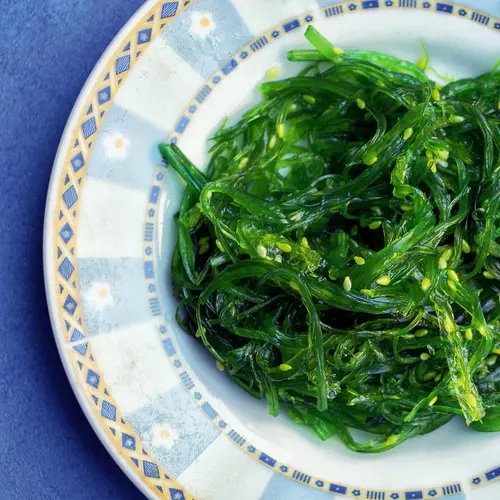What are all those little edible Chinese lanterns sitting on top of your dessert? You may be looking at the fruit physalis.
Physalis is a berry in the Solanaceae plant family, which includes tomatillos, goldenberries, and ground cherries. The scientific name for physalis is Physalis peruviana, but you may hear it called by other names:
- Aztec Berry
- Cape gooseberry
- Chinese lantern
- Goldenberry
- Peruvian ground berry
Physalis is a tart berry, somewhat resembling a tomatillo, wrapped in a papery case. This papery wrapping gives it the look of a tiny Chinese lantern — hence the nickname. However, it does not originate in Asia. The fruit is native to South American countries, including Brazil, Peru, Colombia, Ecuador, and Chile.
Physalis is a versatile fruit that you can eat raw, cooked, or in the form of jams or jellies. It is a rich source of vitamin C, antioxidants, and other nutrients.
Health Benefits
Immune System Support
One cup of physalis contains more than 50% of your daily value (DV) of vitamin C. Vitamin C acts as an antioxidant to protect your body against free radical damage and boost your immune system. It also plays a role in collagen formation, which promotes wound healing. Additionally, vitamin C enhances other nutrients. It helps your body absorb iron and make other antioxidants, such as vitamin E.
Anti-Inflammatory and Cancer-Fighting Properties
Physalis contains steroids called withanolides. Withanolides can help fight inflammatory conditions, such as arthritis, lupus, and inflammatory bowel disease (IBD).
Withanolides may also play a role in the prevention and treatment of cancer. Researchers are studying using withanolides to target and kill specific cancer cells.
Bone Health
Eating physalis fruit can help you meet your daily calcium needs. Most people know that calcium is essential in building and maintaining bone mass. However, calcium also plays a big role in body functions such as:
- Muscle contraction
- Regulating heart rhythm
- Hormone production
- Support for healthy blood vessels
Digestive Health
The high content of pectin in physalis fruit makes it perfect for making jams and jellies, but pectin is also a good source of fiber. Dietary fiber helps move food through your large intestine (colon) to prevent constipation. It also absorbs water in the stool to make it softer and easier to pass through your digestive system.
Nutrition
Physalis is an excellent source of vitamin C, which helps maintain a healthy immune system and encourages wound healing. Other nutrients found in physalis include beta-carotene and vitamin K.
Nutrients per Serving
A one-cup serving of physalis contains:
- Calories: 66
- Protein: 1 gram
- Carbohydrates: 15 grams
- Fiber: 15 grams
- Calcium: 41 mg
- Iron: 0.5 mg
- Sodium: 1.5 mg
- Vitamin C: 41 mg
- Vitamin A: 450 international units (IU)
Portion Sizes
A serving of physalis is about one cup. Although the fruit is relatively low in calories and carbohydrates, some preparation methods may add sugars or carbohydrates to your serving.
Keep your serving size small if you are eating physalis in a sugary dessert, such as cake or pavlova, or eating it as a jam or jelly. You may want to opt for less than a cup of berries if you are dipping them in chocolate or icing.
How to Prepare Physalis
Physalis is a tangy fruit that you can prepare in many different ways. You can eat it raw, cooked, or in jams or jellies. Its citrusy flavor makes it ideal for pairing with or decorating sweet desserts, such as pavlova, fondant icing, cakes, or cupcakes.
To eat a physalis fruit, unwrap the papery case and eat the bright orange berry inside as is. The following are a few other ways to enjoy physalis fruit:
- Open the outer wrapping to expose the berry and carefully arrange on top of pavlovas, cakes, or cupcakes
- Combine the berries with sweet fruit, such as bananas, in a refreshing smoothie.
- Peel back the wrapping and dip the fruit into melted chocolate
- Remove physalis fruits from their wrapper, cut the berries in half, and include them in a fresh fruit salad
You can also poach physalis fruit, though this sugary treat is certainly not as healthy as eating them raw:
- Bring equal parts of water and sugar to boil in a saucepan
- Cook until the mixture becomes syrupy
- Flavor with vanilla
- Unwrap berries and poach in the prepared syrup

